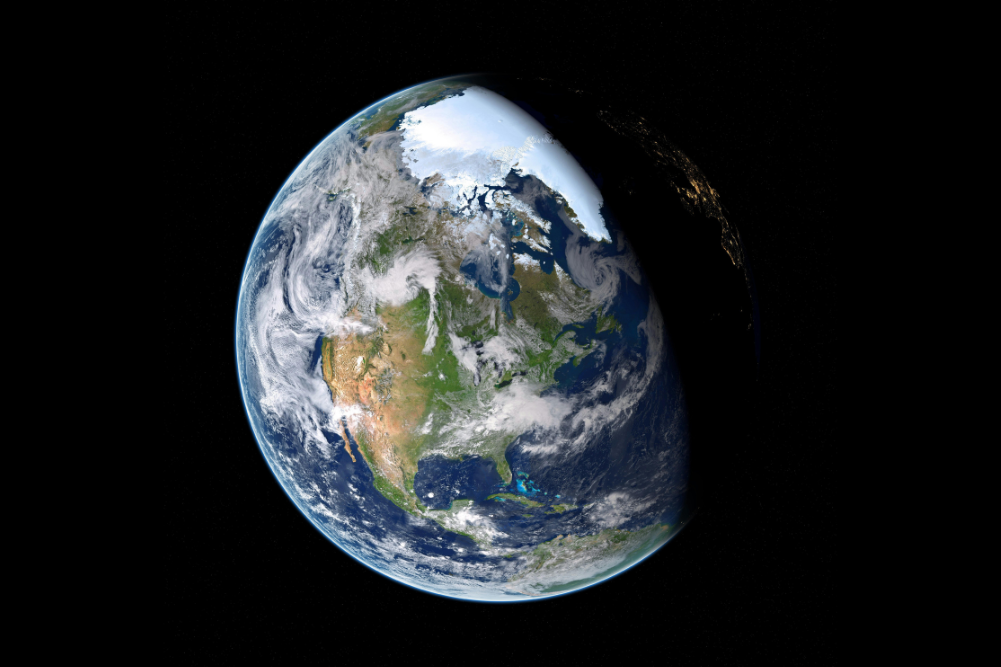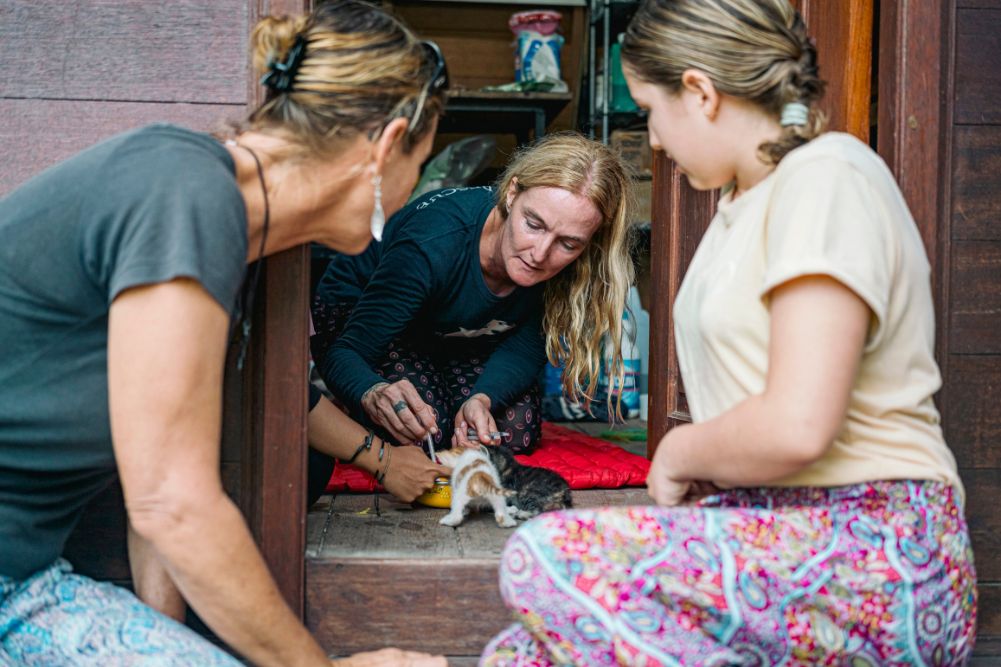Glowin’ in the Wind
Electricity is one of the many things we tend to take for granted. Flicking a switch, we assume the light will come on and feel affronted if the room remains in darkness. About 85 per cent of Australia’s power is currently generated by coal-fired power stations, all of which require vast quantities of water to keep running.
In Victoria, Loy Yang A, Loy Yang B and Yallourn W have a collective water entitlement equivalent to 20 per cent of Melbourne’s domestic usage. It has been estimated that about 1.9 litres of water are required to generate one kilowatt-hour (kWh) of electricity derived from coal.
By the summer of 2008, it’s anticipated that power stations running on coal may have to cut back on production unless there has been significant rain. On the hottest days of the year when air-conditioners push up peak demand, households in NSW and Victoria may experience blackouts or drops in voltage, known as brownouts. In a similar vein, the future capacity of Snowy Hydro is under threat from a record-low storage capacity linked to light snowfalls.
If renewable energy from wind, solar and tidal power comprised a far higher share of the energy market, these threatened power shortages might be averted.
The wind alternative
In a 2003 survey commissioned by Auswind (the Australian Wind Energy Association), wind power received 95 per cent support among members of the public consulted. To its credit, it creates more jobs per unit of energy generated than coal power and is the most viable of renewable sources. Wind farms tend to attract tourists and at the end of their 20- to 25-year lifespan they can be dismantled and the land returned to its former state.
To be economically viable, a wind farm location requires an average wind speed of at least 16km/h. With its southern coast lying in the Roaring Forties zone, Australia is blessed with abundant wind resources. Suitable areas include coastal stretches of Tasmania, South Australia and Victoria where proximity to road and electricity infrastructure minimises upfront investment costs. In these southern states, winds generally blow faster on hotter days, with the result that wind power usefully complements the rest of the grid when it’s most needed.
As the wind speed doubles, roughly eight times as much power is generated. This is a mixed blessing; under windy conditions, significantly larger volumes of energy can be fed into the grid, but a turbine’s electrical components also need to be designed to accommodate a wide range of wind speeds, and a cut-off must be incorporated into the system.
Winds blowing close to the ground are slowed by friction, so turbine towers are built to an impressive height to minimise this drag. Furthermore, as the blade length doubles, there is roughly a four-fold increase in generation. Both of these factors have encouraged a long-term trend towards increasingly large structures, and a single modern turbine generates up to six megawatts (MW).
Over the past 20 years, the cost of wind power has been steadily falling. According to an Auswind estimate, it currently costs about 7.5 cents per kWh to generate, and this figure is dropping by about 4 per cent every year. While standard grid power stands at about four cents per kWh, this price excludes the costs associated with greenhouse emissions and other pollutants, and the building of new power plants.
Auswind believes that within 10 to 15 years, wind will be cost-competitive thanks to a combination of improved economies of scale and rising fossil fuel costs. It supports an arrangement where there is no government discrimination between electricity technologies and an undistorted market determines which are best to use. An end to government subsidies would boost wind energy while disadvantaging coal power and preventing nuclear energy from ever getting off the ground.
The global wind picture
The modern wind-power industry has its roots in early 1980s Denmark, when community-controlled wind-energy cooperatives dominated the scene. From these beginnings, Danish wind turbine manufacturer Vestas oversaw wind’s evolution into a major global energy player, harnessing improved economies of scale to bring down the cost per kWh. Today, Denmark receives 20 per cent of its power from the wind and no supply problems have been encountered.
From a very small starting point, the Australian industry has been undergoing exponential growth. After the first large-scale wind farm opened in 1998 near the NSW town of Crookwell, total installed capacity roughly doubled in size every year during the period 1999-2004.
A few years ago, some wind projects were being shelved because of a lack of support from the Howard government. With the recent advent of renewable energy targets in NSW, Victoria and South Australia, the wind industry has been reinvigorated. By the end of 2006, capacity had reached 817MW across 42 separate wind farms, with a further 6785MW proposed.
As the industry grew, it created employment in its wake. Today, Portland on the Victorian coast is home to two plants, one manufacturing blades and the other producing towers. At Wynyard, in the northwestern corner of Tasmania, Vestas opened a factory in 2003 for producing nacelles (housing units for the generating components). When it closed last year because of a local slump in wind projects, an absence of federal government incentives for wind power was blamed.
Following in the steps of Denmark, the town of Daylesford in Victoria is building Australia’s first community-owned wind development. Two turbines with a combined capacity of 4MW will generate enough power to meet the needs of all homes in the Daylesford-Hepburn Springs area, saving 14,000 tonnes of greenhouse emissions per year. This will support the local economy by stopping large amounts of money from leaking out of the area in the form of electricity payments.
At the end of 2006, total global installed wind-energy capacity was 74,000MW, a 30 per cent increase on the previous year. Leading wind-power countries are Germany, Spain, the US and India. Among European nations, the UK has the largest wind resource and, like Denmark, it has opted to locate some wind farms offshore. Despite the construction and infrastructure challenges these projects present, offshore turbines harness winds that are stronger and consequently produce significantly more power.
Against the wind
Not everyone is happy with the idea of the surrounding landscape sprouting giant windmills. Objections against proposed wind farms have been strongest along the Victorian coastline, which some residents believe is being marred by the visual impact of these projects. In recent years, a range of arguments have been raised by anti-wind activists. These include:
Baseload power — This belief holds that wind power is unable to provide a continuous, reliable supply due to “intermittency” — periods of little or no wind — coupled with the absence of a storage medium. Proponents believe wind power, which constitutes only a small percentage of Australia’s total electricity generation, has huge room for expansion before baseload might become an issue. We currently obtain about 1 per cent of our power from wind and Auswind believes that, as in Denmark, this figure could rise to 20 per cent with no negative effects on the distribution network.
As Australia is a very large country, wind speeds vary widely and where it is calm somewhere on the grid, it will be windy in other locations. Wind can also be complemented by other renewables such as solar and tidal power that feed the grid when the wind is low.
Turbine efficiency — Although wind is claimed by some people to be inefficient, it’s generally more efficient than coal power. This argument can be seen as largely irrelevant due to the limitless source of “fuel” that wind power offers.
Energy payback time — There is a persistent myth that wind turbines require more energy to manufacture than they eventually deliver. In reality, the energy payback time of a large turbine (including the energy costs of installation, transportation and maintenance) is reached within a few months.
Aesthetics — As the industry has developed, the height of a modern wind turbine has increased significantly to 40-60 metres. Some find these huge structures ugly, while many others are attracted to them. Aesthetic objections can only be fully resolved by situating wind farms offshore.
Noise — As designs have improved, this is far less of a problem with modern wind turbines and is unusual at a distance of more than a few hundred metres. However, some people do appear to be affected.
Bird deaths — A few birds are killed by fast-moving turbine blades in Australia, though their numbers are dwarfed by those birds killed as a consequence of other human activities. Studies carried out in Victoria have found that no threatened species are being killed by turbines.
Climate change in the wind
In March 2007, British economist Sir Nicholas Stern, author of the Stern Review, challenged Australia to meet his target of a 30 per cent greenhouse emissions reduction by 2020 and a 60 per cent reduction by 2050. As climate change has entered the mainstream political debate, the major parties have responded quite differently, especially in their greenhouse emissions reduction targets. Labor’s policy is to match Stern’s 2050 target, while the Greens support Stern’s 2020 target (with a deeper 80 per cent cut by 2050).
Currently, the Coalition, which emphasises the importance of not burdening industry, has no target of any kind, but plans to set one next year after the federal election. Following recommendations from a resource-sector-dominated taskforce, in May it announced an intention to establish an emissions trading scheme but to delay its introduction until as late as 2012.
Although wind is an important tool for tackling climate change, some wind farm projects have run into government red tape. Federal Agriculture Minister Peter McGauran has described wind farms as a fraud that relies on taxpayer subsidies, claiming they fail to produce a measurable amount of electricity.
In 2001, the federal government set a Mandated Renewable Energy Target (MRET) of 9500 gigawatt hours worth of new renewable generation by 2010. At that time, this represented 2 per cent of the total national electricity supply, but due to a rise in consumption, the renewable share of the pie shrank before the MRET was later allocated to generators. Nearly all went to wind, as it was the cheapest and quickest to install.
When the MRET came under review in 2003, Sydney-based group Climate Action Network Australia led the call for it to be increased to 10 per cent, a figure closer to other country’s national targets at that time. This was strongly endorsed by Auswind, which set up its own campaign website. Despite thousands of submissions calling for a higher target, such a change was rejected by the government in favour of a continued emphasis on coal and, in particular, the development of “clean coal” technology. Unfortunately, this will probably take decades to deliver major carbon cuts.
With a fully subscribed MRET, the wind industry had to look elsewhere for incentives. Fortunately, within the past few years, state governments in NSW, Victoria and South Australia have all brought in legislated renewable energy targets. Victoria’s goal is to reach 20 per cent by 2020; SA is aiming for 20 per cent by 2014 and NSW has two targets: 10 per cent by 2010 and 15 per cent by 2020. Both SA and Victoria have given their wholehearted support to wind, which is expected to provide 15 per cent of SA’s power supply by the end of this year.
Green opportunities
As the power market started to deregulate in 2002, consumers in the southeastern states were given the opportunity to switch across to another supplier. While many households made such a choice based on price alone, others saw this as a chance to support the best environmental options and make a positive difference.
Following the strong national response to Al Gore’s 2006 documentary An Inconvenient Truth, consumers have been signing up in droves to buy accredited Green Power in order to curb their carbon emissions from power usage while supporting the development of renewable energy. Although personal action as this level is important, it’s obviously not a substitute for government leadership.
Last year, the environment coalition Green Electricity Watch provided buyers with a useful guide by ranking all Green Power products with a star rating ranging from “very good” to “very poor”. The two 100 per cent wind-power products on the market, offered by Origin Energy and TRUenergy, both received the full four stars. These are available to households in the southeastern states and may soon be arriving in Queensland. Another Green Power supplier with an emphasis on wind is the carbon-neutral company Climate Friendly.
In the fast-changing political arena, decisions are being made that could affect the future viability of wind in Australia. The recent report from the emissions trading taskforce (whose members include coal miners BHP Billiton and Xstrata) recommends the scrapping of both federal and state renewable energy targets. Although the states are unlikely to agree, such a call is a reminder of the close relationship between industry and the federal government.
When an emissions trading scheme eventually starts, Auswind believes that on economic grounds savings will initially be sought through energy efficiency and a move towards gas-fired power stations. For this reason, it is calling for energy sector reform and targeted long-term support for the development of renewable energy sources.
Resources
Auswind (Australian Wind Energy Association)
Green Electricity Watch
Green Electricity Watch 2006 survey
Green Power
GreenEarth Wind
TRUenergy Wind Power
Climate Friendly
Country Guardian (anti-wind power)
Martin Oliver is a writer and researcher based in Lismore (Northern NSW).







